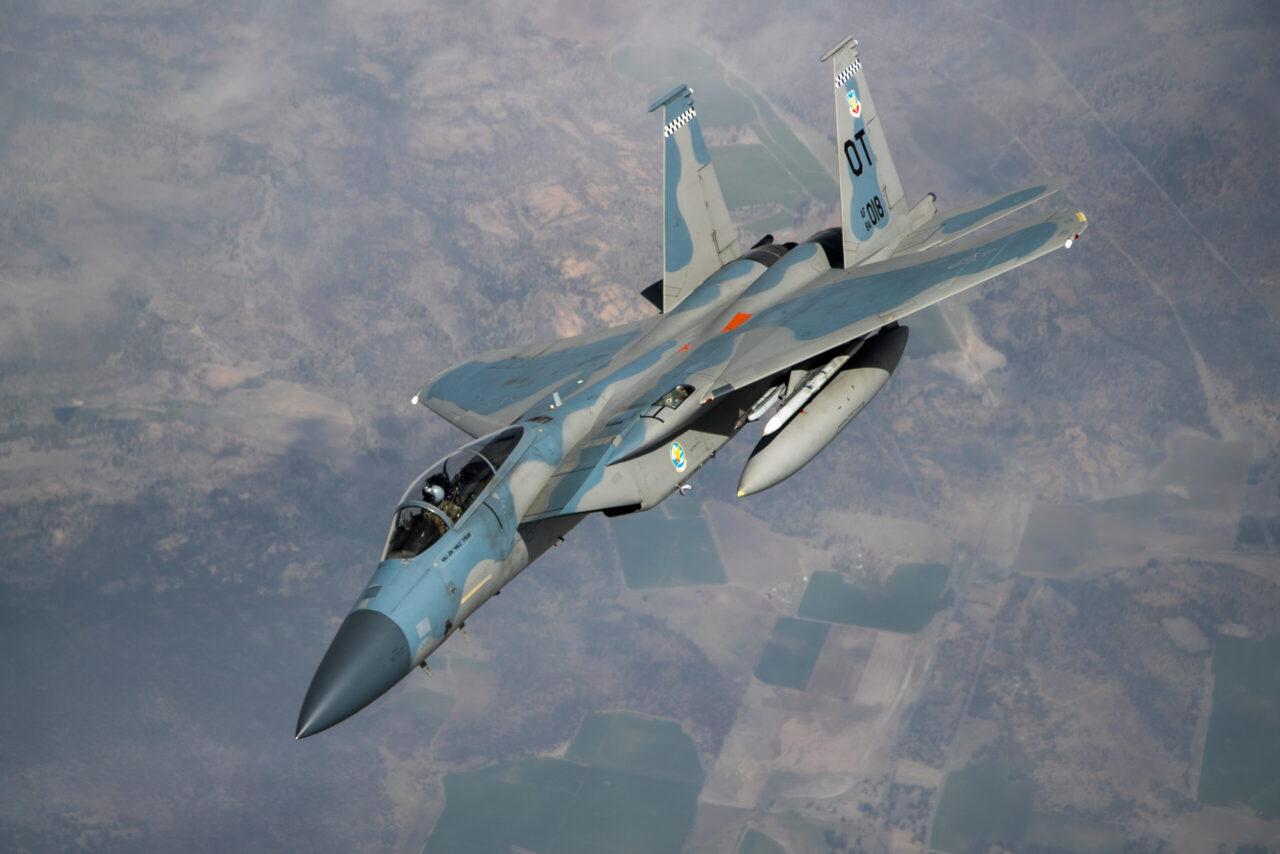
The F-15EX’s Rollout Is Facing New Challenges
The Eagle II will represent the most advanced variant of the F-15 aircraft family once fully fielded.
The Air Force’s latest fighter procurement is suffering from some minor setbacks. According to reports, the Boeing-manufactured F-15EX Eagle II jets are experiencing an issue pertaining to fuel venting. Only some of the nine delivered Eagle IIs have been sidelined due to this discovery so far, and Boeing is apparently already testing potential solutions. As detailed by a Boeing spokesperson, “Fuel venting occurs when fuel overflows from the tanks inside the aircraft and, by design, then flows overboard through special ports near the tips of the wings on the F-15. It occurs occasionally on various aircraft, including all F-15 models. Some F-15EX aircraft have vented fuel at a higher-than-expected rate, which has a joint USAF and Boeing team investigating the root cause.” The spokesperson continued: “We have several potential solutions we are testing, including new factory work instructions requiring verification of proper torque on connectors to ensure that’s not a factor, and the team is investigating if we may have a batch of valves showing problems.”
Despite this apparent minor setback, the Eagle II is expected to be a critical player in the service’s air fleet down the line. The next-generation fighter aircraft possesses all the bells and whistles of a modern platform. From ordnance power and capacity to top speed and open architecture, the Eagle II will represent the most advanced variant of the F-15 aircraft family once fully fielded. In fact, this latest iteration was designed in part to be able to carry a more diverse array of ordnance in support of the F-35 Lightning II and to provide cover for its fifth-generation counterpart in combat operations.
Back in 2020, the US Air Force awarded Boeing a $1.2 billion contract to build a new contingent of Eagle fighters. The F-15C/D fleet has been operational for longer than intended, largely due to the insufficient procurement of the F-22 Raptor platform. Over the last five years, the Eagle II has undergone various tests and evaluations and has performed well as a next-generation alternative to the F-15 platform. The Eagle II jets are equipped with the F110-GE-129 engines, which produce 29,000 pounds of thrust in afterburner. Able to top speeds at Mach 2.5 (times the speed of sound), this capability makes the Eagle II virtually unparalleled in the skies.
Where the Eagle II really shines, however, is in terms of ordnance power. With a dominant payload capacity of nearly 30,000 pounds, this iteration truly represents what it means to be a bomb truck in the skies. Fox News first reported in 2023 that the F-15EX can carry up to a dozen air-to-air missiles, which is double the typical number of its predecessor. This lethal aircraft is capable of carrying 13.6 tons of weapons, more than any earlier Eagle variant.
While the Eagle II appears to be a killer aircraft on paper, the recent setbacks impacting the platform due to fuel venting issues could lengthen the platform’s delivery schedule.
About the Author: Maya Carlin
Maya Carlin, National Security Writer with The National Interest, is an analyst with the Center for Security Policy and a former Anna Sobol Levy Fellow at IDC Herzliya in Israel. She has bylines in many publications, including The National Interest, The Jerusalem Post, and The Times of Israel. You can follow her on Twitter: @MayaCarlin.
Image: DVIDS.
The post The F-15EX’s Rollout Is Facing New Challenges appeared first on The National Interest.
















